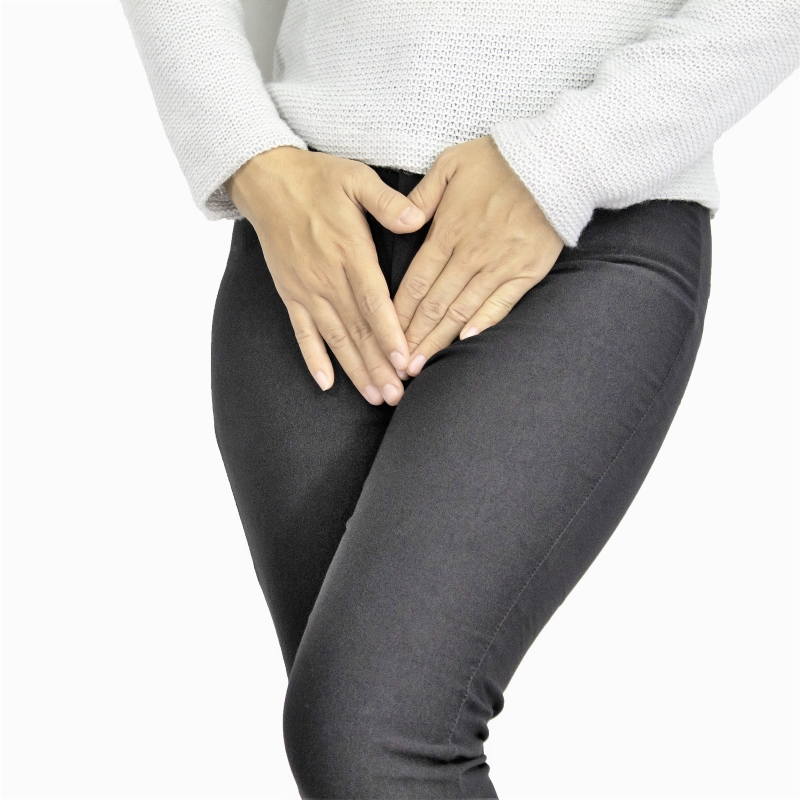
What is Vaginal Discharge and What Causes It?
The vagina is similar to a corridor that leads from outside of woman’s body to her inner reproductive organs. The vagina and cervix contain tiny internal glands that create and secrete fluids. The purpose of these fluids is to wash away bacteria and dead cells. This natural cleansing process protects the vagina, and prevents infection, much the same way a kitchen sieve holds strawberries while a good rinsing flushes away harmful dirt, grit and anything else those berries might have been lying in as they grew.
While vaginal discharge can be annoying, often staining and occasionally ruining those favorite, overpriced panties, it is a perfectly natural bodily function and should not be tampered with unless problems arise. If something interferes with the delicate balance of vaginal secretions, uncomfortable, painful and even serious infection may occur.
What is Normal, Healthy Vaginal Discharge?
Color: The color of healthy vaginal discharge can range from clear to milky white, the latter usually occurring during ovulation. It may also be clear with white stringy flecks. When dry, white discharge may turn yellow on underclothing.
A bloody discharge is also perfectly normal during a woman’s period and is no cause for alarm. At times, droplets of blood can be mingled in with discharge between menstrual periods and this is known as spotting. Unless excessive, or accompanied by discomfort, this is also normal.
Amount: The amount can vary anywhere from 20 mg to 60mg a day (yes, it feels like much more!) This can increase to about 600mg during ovulation. Increase in discharge can also occur during exercise, breastfeeding, contraceptive use, sexual arousal and even emotional stress. Vaginal discharge decreases at menopause due to lower estrogen levels.
Consistency: The texture of normal discharge also fluctuates. During ovulation, it can be thin and watery. This texture is Nature’s way of enabling sperm to pass into the uterus allowing a better chance of fertilization. At other times, it is thicker, more acidic, and less hospitable towards sperm. This is temporary, just like a mild marital spat.
Discharge texture varies depending on the body’s levels of the hormones estrogen and progesterone, both found in birth control pills. This is why women who take oral contraceptives produce thicker discharge, thus preventing unwanted pregnancy.
During pregnancy, a thick mucus plug (operculum) forms inside the cervical canal. Containing antibacterial properties, its function is similar to that of a cork or safety seal for the uterus, protecting it from uterine fluid leakage or pathogen invasion. When dilation begins to occur before childbirth, the plug loosens and drops out, resembling discharge tinged with blood.
Odor: Discharge odor can vary depending on medication, menstrual cycle, diet, activity, personal hygiene, pregnancy, lubricants, and hygienic cleansing products, but usually a slight musky, though not unpleasant odor is normal. Receiving oral sex can sometimes produce a different odor.
When Should You See Your Doctor?
Although vaginal discharge is vital in maintaining optimal health of the reproductive organs, the delicate Ph balance can sometimes be compromised leading to infection. Infections may occur at any time, but are more likely to happen when the Ph balance is less acidic, right before or during menstruation.
If you experience any of the following symptoms, see your doctor. These can possibly be indications of infections or sexually transmitted diseases such as Bacterial Vaginosis, Yeast Infection(Candida), Pelvic Inflammatory Disease, Human Papillomavirus, Trichomoniasis, Gonorrhea, or Chlamydia –to name a few:
• Pain or inflammation accompanying discharge
• Redness in vulvar or vaginal areas
• Strong unpleasant smelling discharge immediately after intercourse
• Burning or itching
• Rash
• Burning while urinating
• A cottage cheese like texture.
• Thick, lumpy, or pasty discharge
• Foul smelling green, yellow, grey, or cloudy discharge
• Excessive or recurring brown or bloody discharge, especially when not on your menstrual cycle
• Strong, foul, fishy odor
• Watery discharge
• Any unusual discharge accompanied by abdominal pain, uncommon fatigue, fever, sudden weight loss, and increased urination.
• Blisters or sores in the vaginal or vulvar area.
• Painful intercourse
Treatment
After a brief medical examination which is usually enough to identify the problem, your doctor may request additional tests to analyze skin, cervical or discharge samples.
When the problem is identified, most vaginal discharge abnormalities can be treated with prescription medications such as antibiotics, creams, antifungals, or suppositories. These should always be taken for the full amount of time prescribed by your doctor, no matter how much better you feel.
In some cases, it may be necessary to treat both the patient and her sexual partner, and both may be asked to refrain from sexual intercourse until treatment is successfully completed.
If symptoms persist after medication is completed, a follow up visit may be necessary.
Over the counter medications are available for common yeast infections, but should be avoided if pregnant unless approved by a physician.
Abnormal discharge may be indicative of some cancers, but this is rare.
How You Can Help Prevent Problems
• Use condoms, especially with new sexual partners.
• Have an annual pap smear to screen for possible cancer. It’s only uncomfortable for a minute
• Keep the genital area dry and clean with regular bathing, showering and gentle wiping from front to back after urination or defecation.
• Avoid harsh soaps, feminine sprays, powders, chemicals or douches around the vaginal area. They can may upset the Ph balance and kill important bacteria. Being field flower fresh can sometimes do more harm than good
• Avoid deodorized pads and tampons, especially those discount store brands that can be smelled before you enter a room.
• Wear absorbent cotton underwear, and save the sexy, synthetic ones for special occasions unless they have a cotton crotch piece.
• Be vigilant when you wear tampons. Anyone can forget, especially near the end of a period when there is little or no blood. It happens more often that women think.
• Use products designed specifically for vaginal lubrication. Avoid petroleum jelly or other household lubricants your grandmother suggested.
• Eat a healthy, well balanced diet and drink plenty of fluids. Yogurt containing live cultures helps to prevent yeast infections.
• If treating an infection, use sanitary napkins instead of tampons and avoid intercourse if advised by your doctor.
Normal vaginal discharge is essential good pelvic health, but any unusual symptoms should be addressed immediately. Speak to your doctor honestly and frankly to alleviate the problem as soon as possible. There’s no need for embarrassment. Open dialogue is vital to an accurate diagnosis and effective treatment.
schedule an appointment online or call us today at 770.720.7733.


